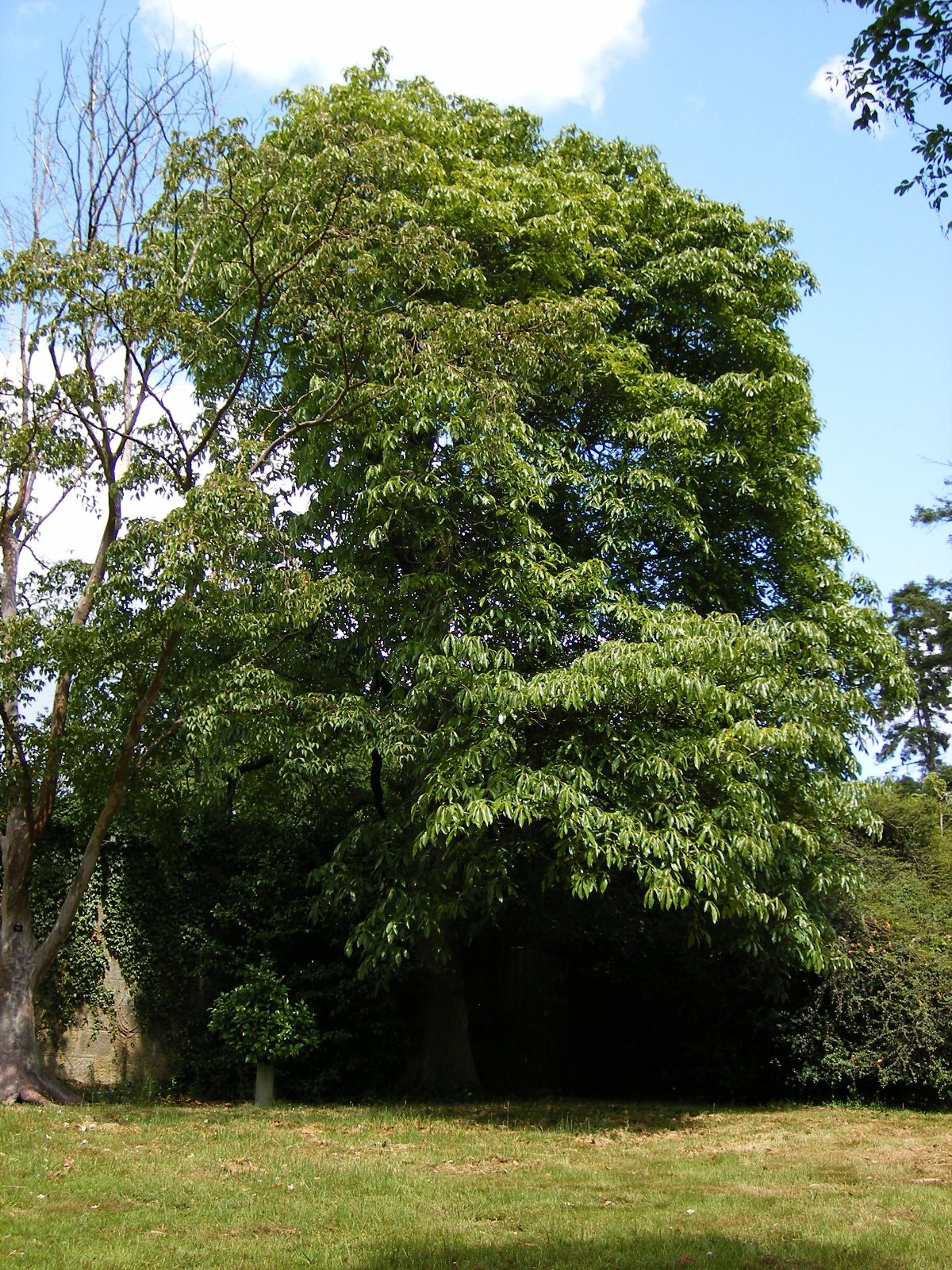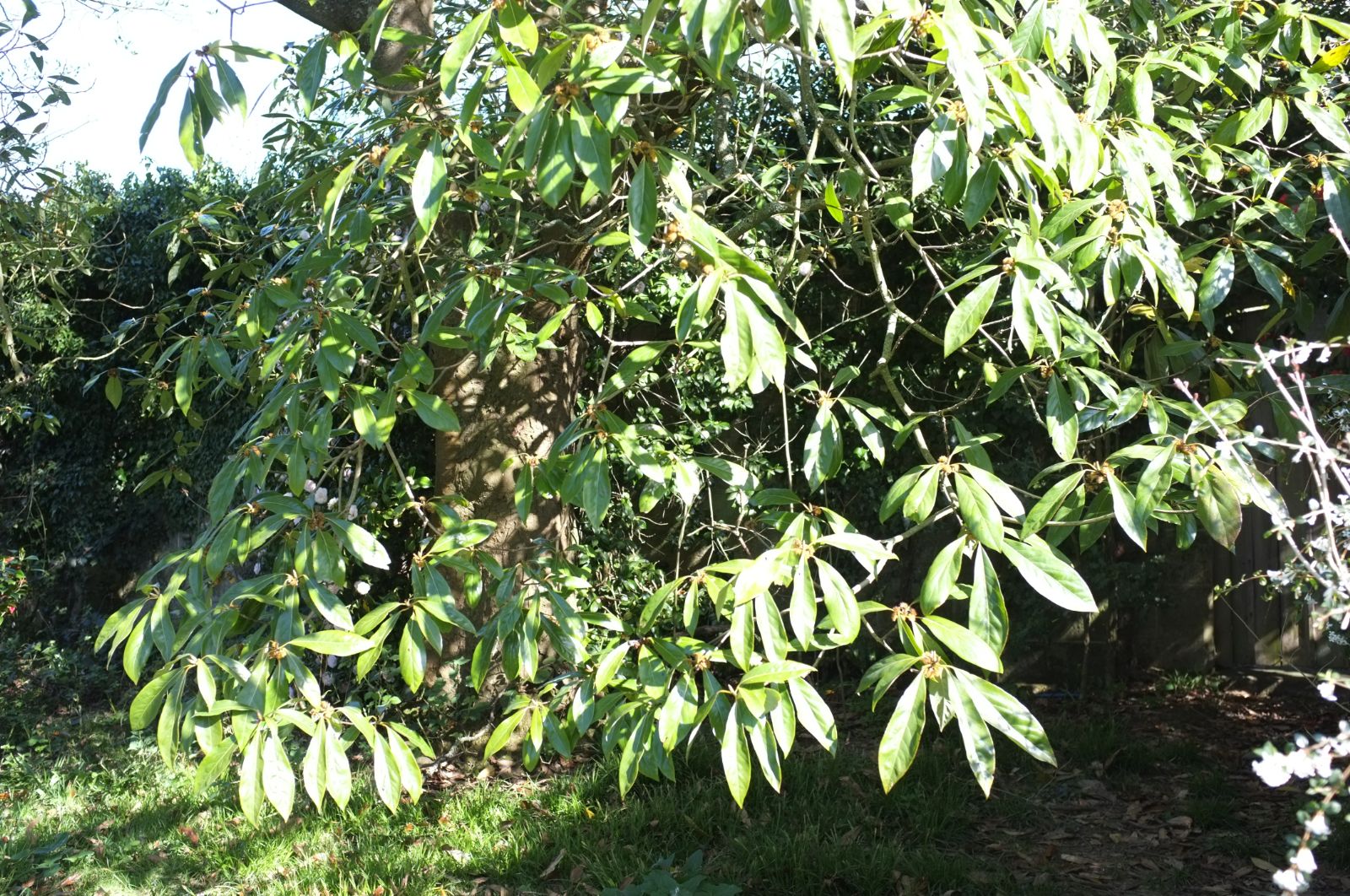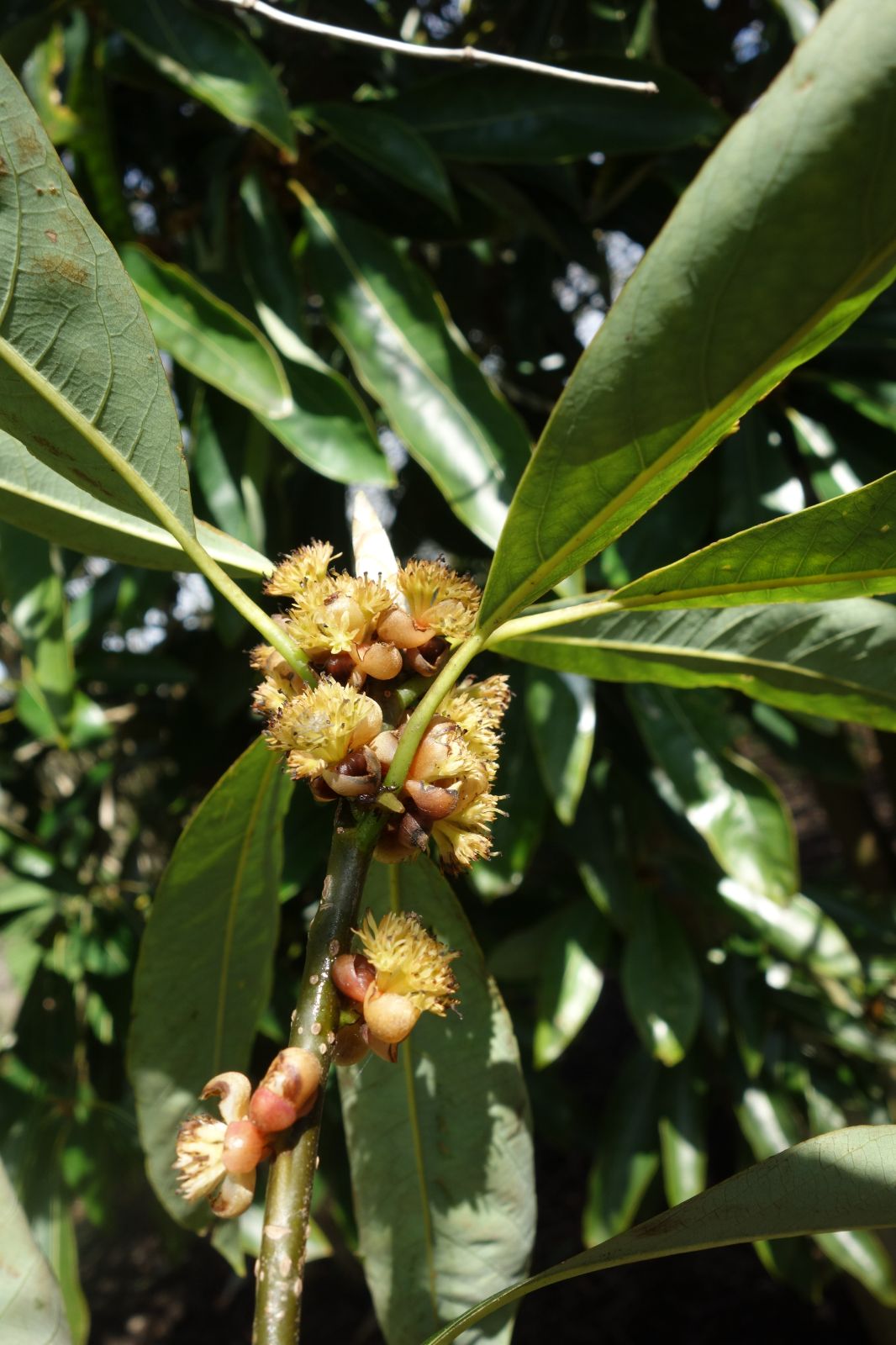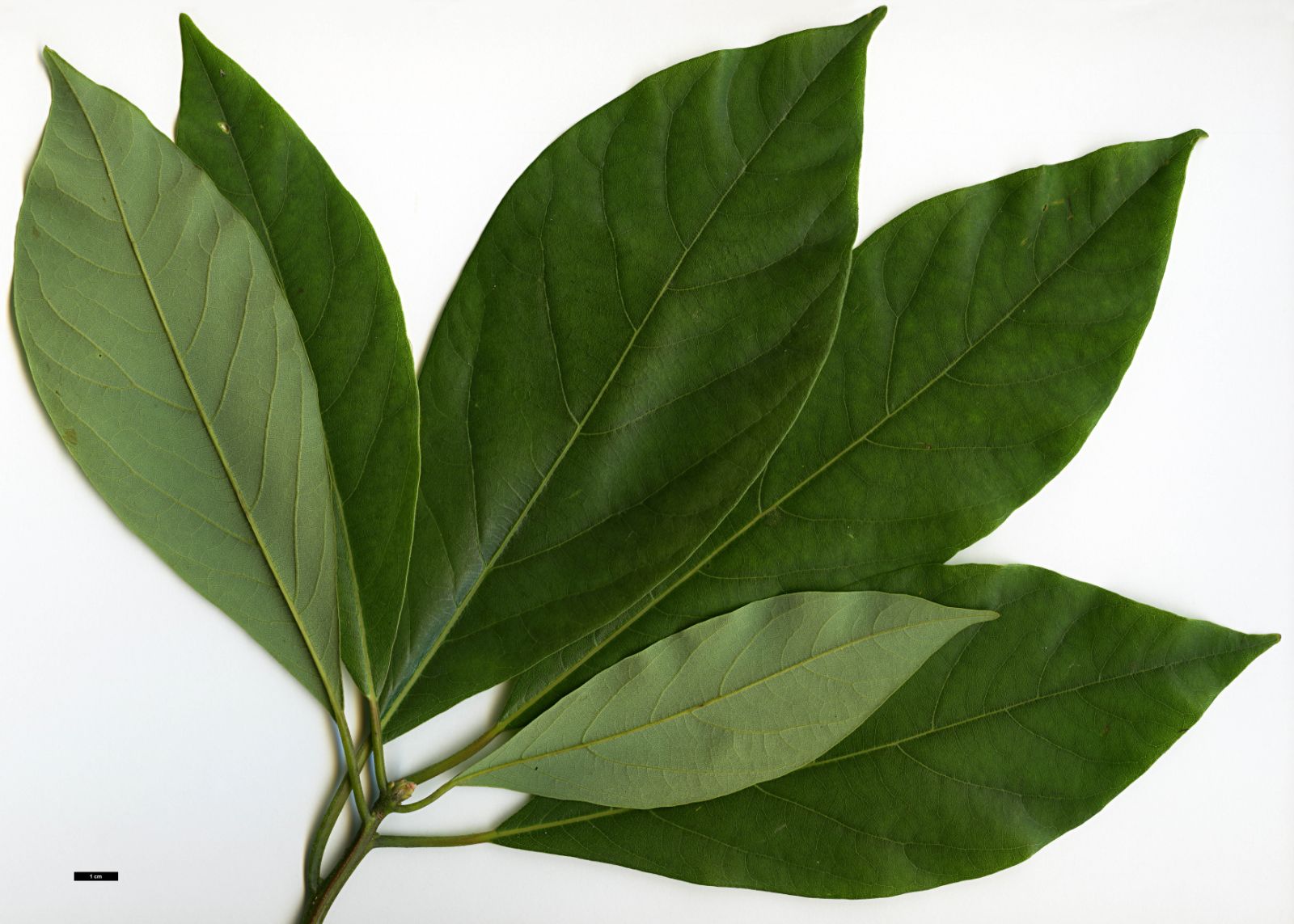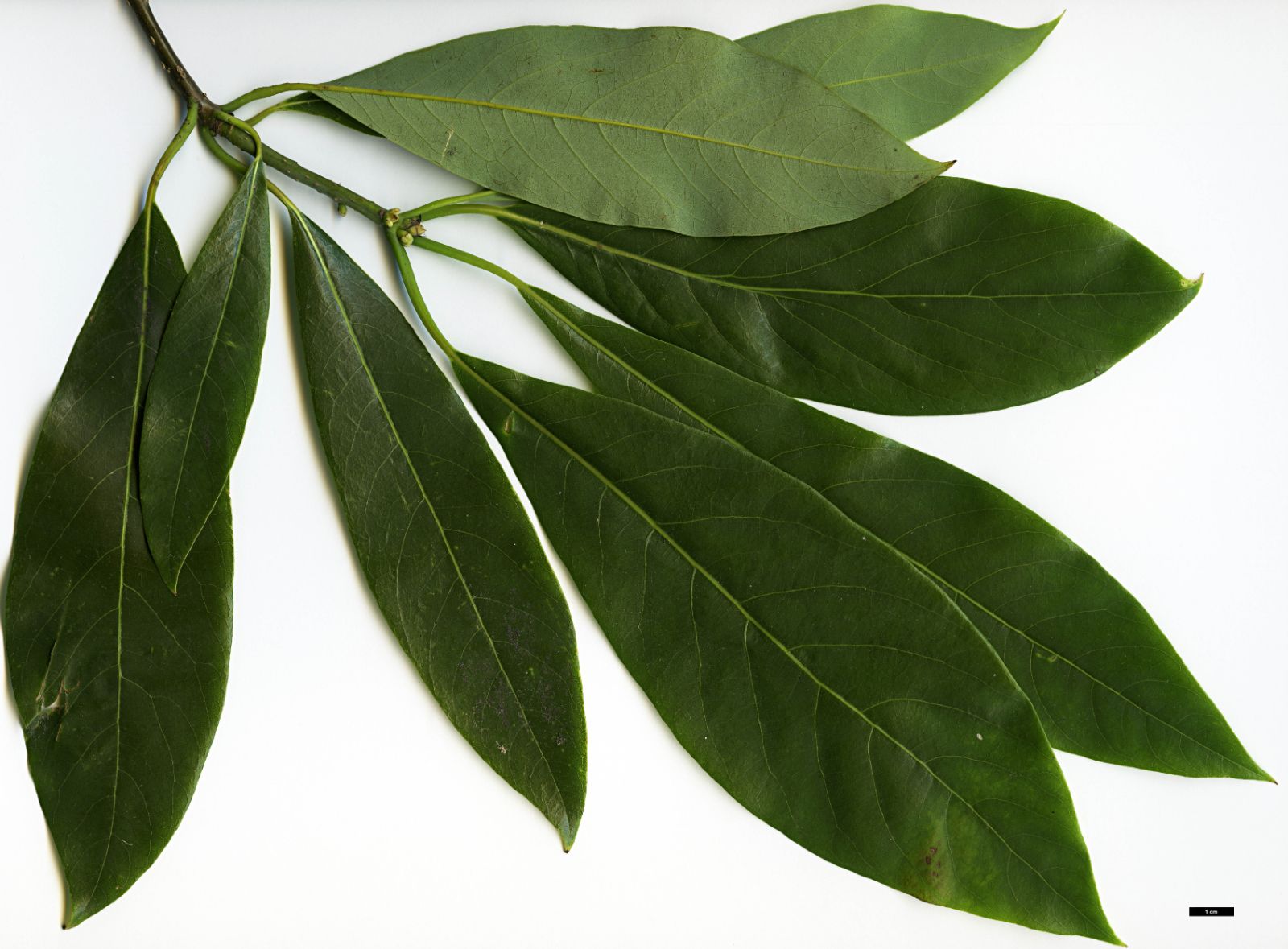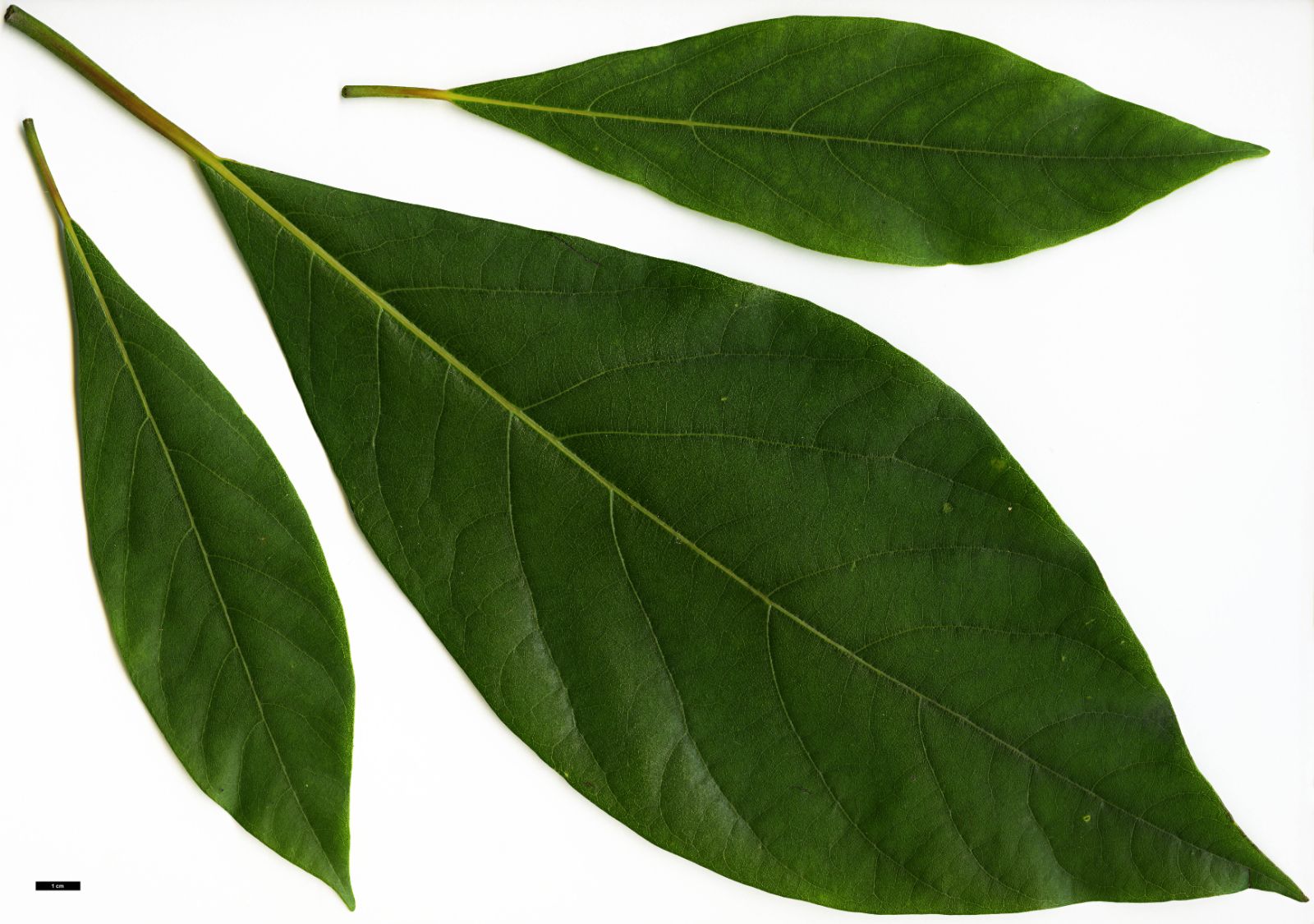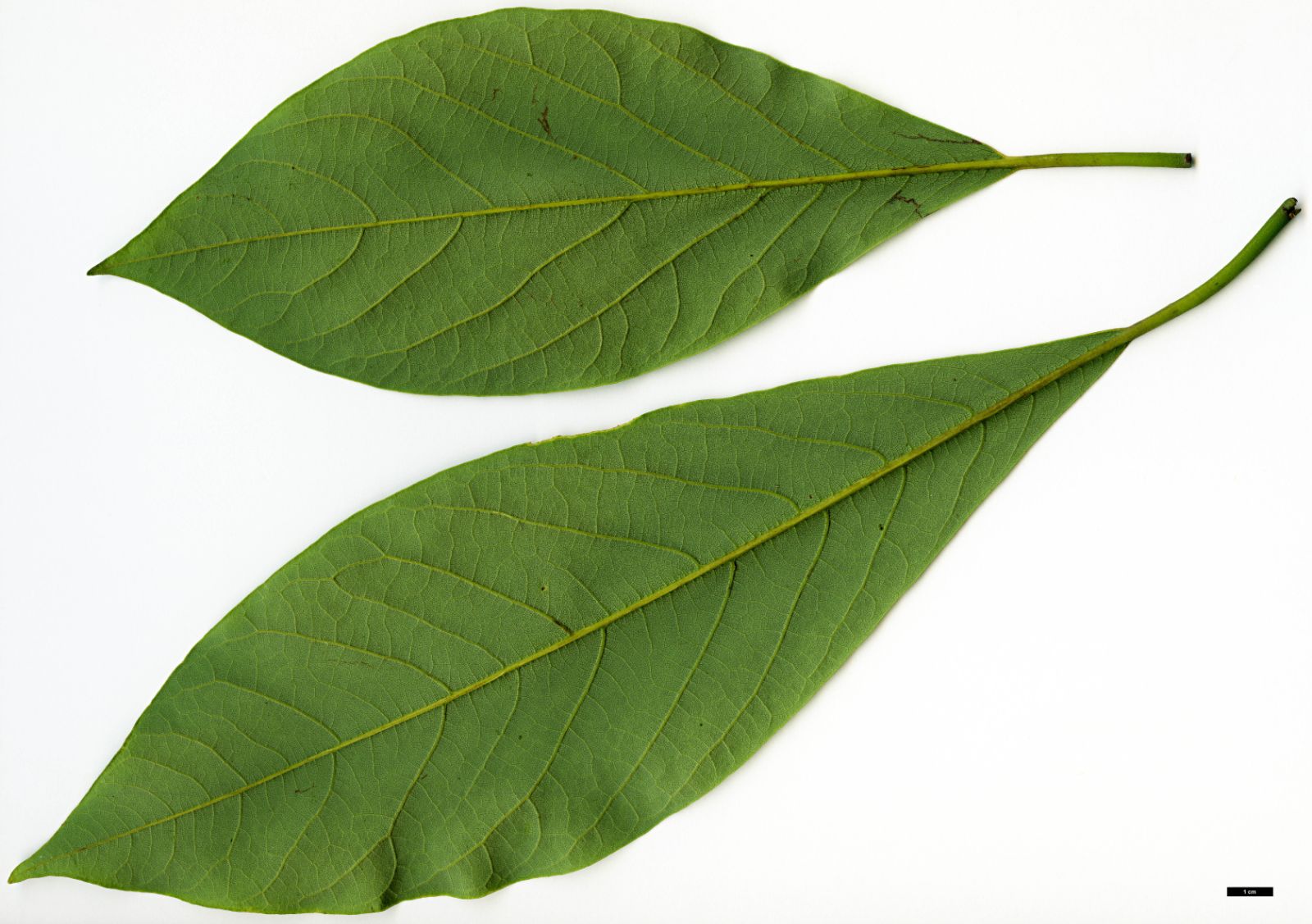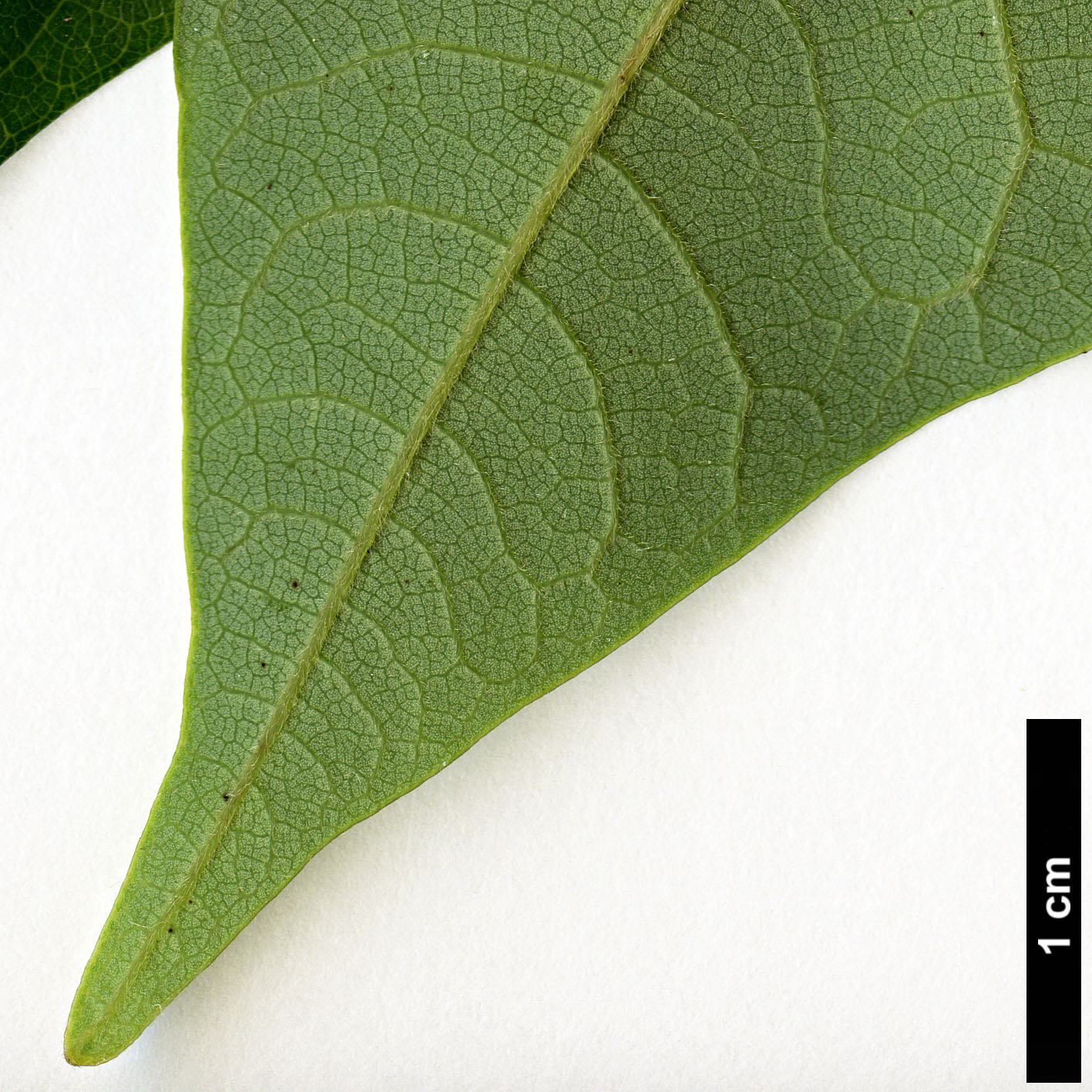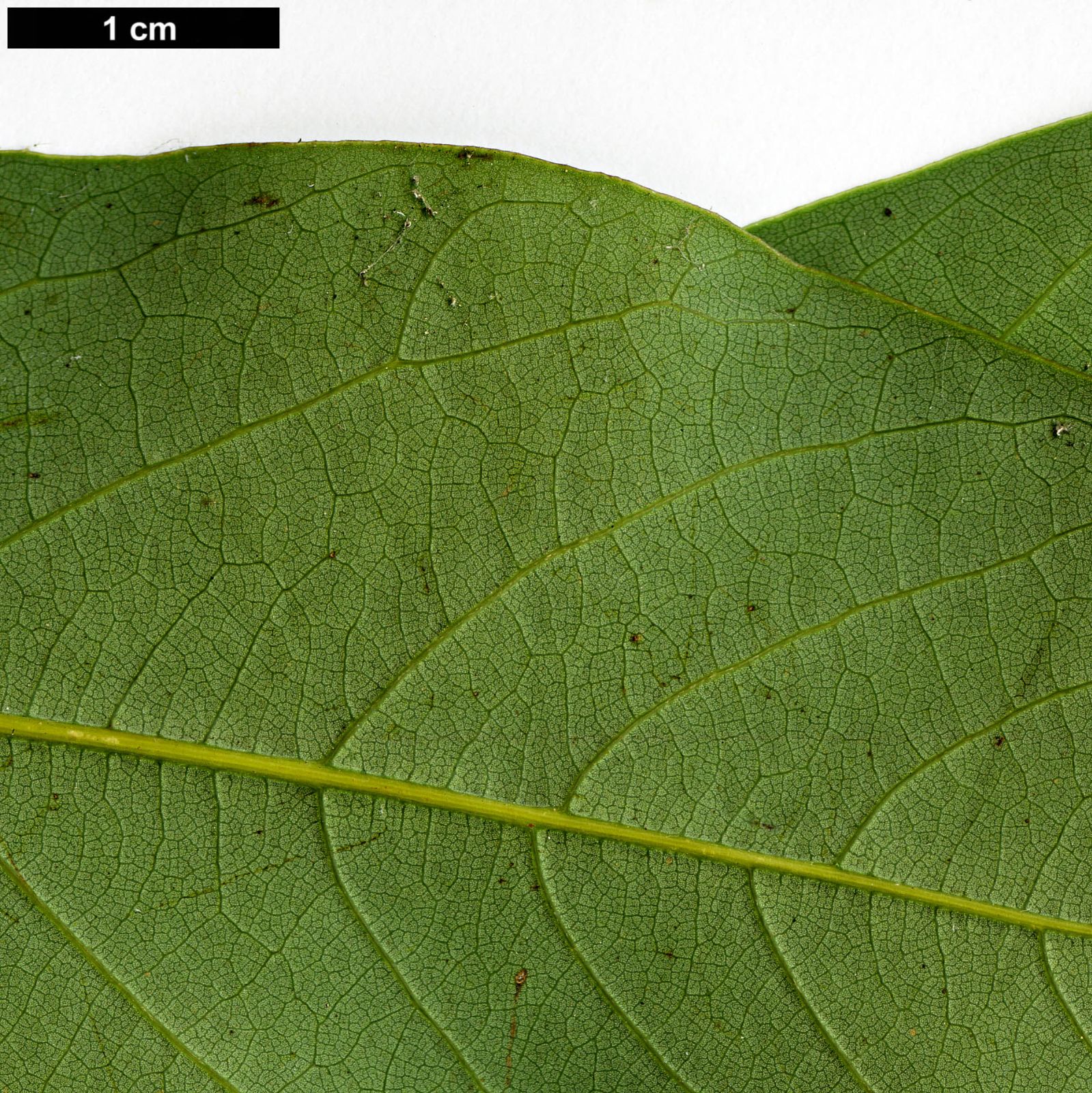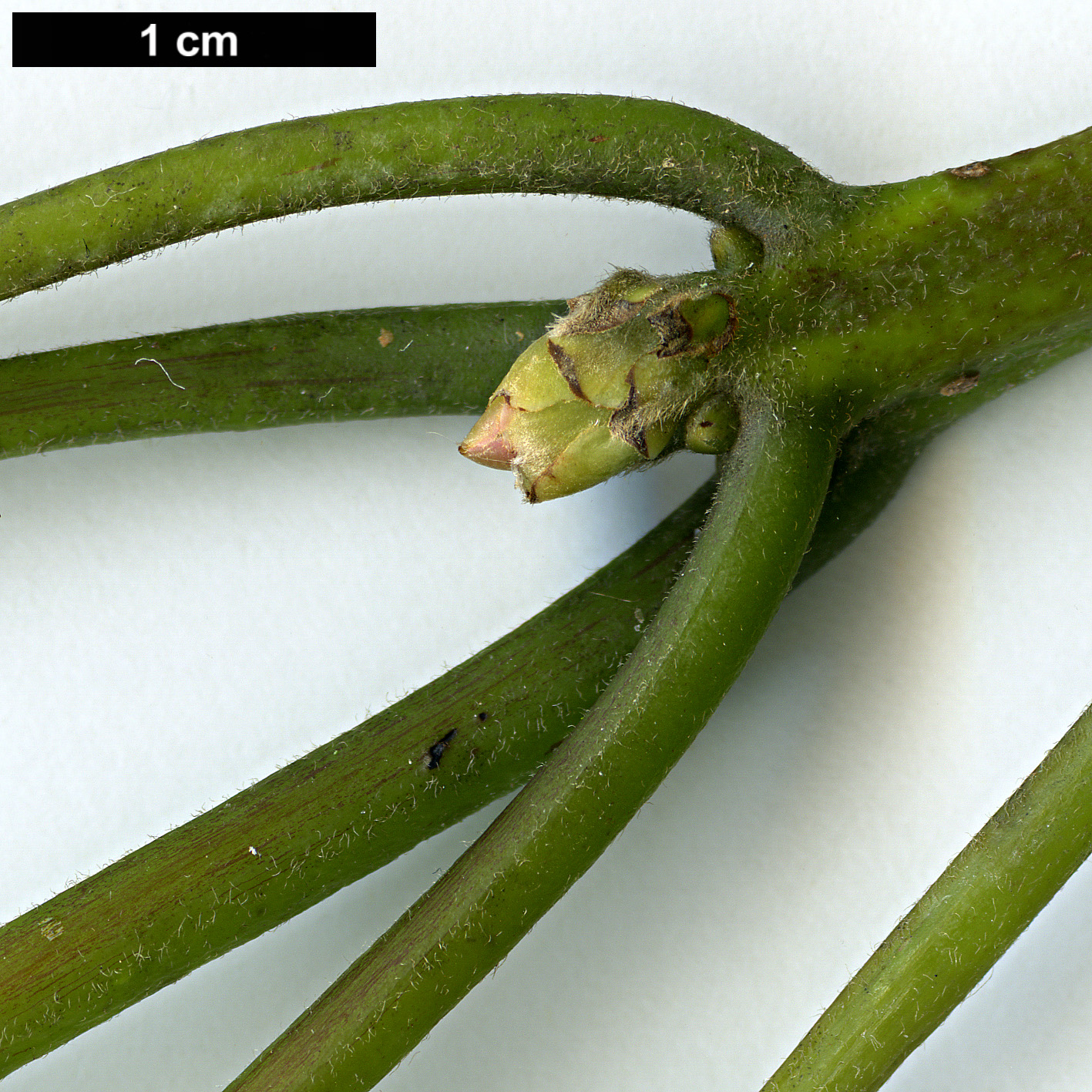Lindera megaphylla
Sponsor
Kindly sponsored by
a member of the International Dendrology Society
Credits
Julian Sutton (2023)
Recommended citation
Sutton, J. (2023), 'Lindera megaphylla' from the website Trees and Shrubs Online (treesandshrubsonline.
Genus
Other taxa in genus
- Lindera aggregata
- Lindera akoensis
- Lindera angustifolia
- Lindera assamica
- Lindera benzoin
- Lindera chienii
- Lindera communis
- Lindera erythrocarpa
- Lindera floribunda
- Lindera fragrans
- Lindera glauca
- Lindera melissifolia
- Lindera metcalfiana
- Lindera neesiana
- Lindera obtusiloba
- Lindera praecox
- Lindera pulcherrima
- Lindera reflexa
- Lindera rubronervia
- Lindera sericea
- Lindera tonkinensis
- Lindera triloba
- Lindera umbellata
Small to medium evergreen tree to 15(–25) m. Bark grey-black. Branchlets robust, terete, purple-black, glabrous or pubescent, with lenticels. Terminal buds ovate, ~1.5 cm long, the scales white-wooly outside. Leaves pinnately veined, with 15–21 pairs of lateral veins; blade leathery, oblanceolate to oblong, 10–23 cm long; upper surface shiny green, glabrous; lower surface pale and sometimes glaucous, glabrous or variably hairy; base attenuate; margin entire; apex acute or acuminate; petiole 1.5–3 cm, glabrous or pubescent. Umbels axillary, on short (0.6–1.5 cm) branchlets, many-flowered. Flowers yellow-green, tepals 6, with yellow-brown hairs at least on the outside; male flowers with 9 fertile stamens; female flowers with nine staminodes and a peltate stigma. Fruit ellipsoid or ovoid, purple-black at maturity, ~1.8 × 1.3 cm. Flowering February–April, fruiting September–December (China). (Cui & van der Werff 2008).
Distribution Myanmar China Anhui, Fujian, Gansu, Guangdong, Guangxi, Guizhou, Hubei, Hunan, Jiangxi, Shaanxi, Sichuan, Yunnan Vietnam
Habitat Evergreen broad-leaved forests or thickets in wet places on mountain slopes or in valleys; 1600–2000 m.
USDA Hardiness Zone 8-9
RHS Hardiness Rating H4
Conservation status Least concern (LC)
Lindera megaphylla is an unusual and impressive evergreen which, in a generally shrubby genus, stands out as a tree-forming species. Its glossy, dark green leaves are especially long (giving rise to the specific epithet) and proportionately rather narrow, resembling species of Cinnamomum and Daphniphyllum (Bean 1981; Raulston 1993). Their size, and they way they tend to be clustered near the branchlet tips, distinguish it from the other evergreen, pinnately-veined species described here. The leaves are aromatic when crushed, like so many other linderas. The small, densely clustered, yellowish flowers add a little to the ornamental effect in spring, as would the shiny black fruits in autumn if males and females were to be grown together. This is one of the hardier evergreen species.
Lindera megaphylla is a widespread and common species in warm-temperate and subtropical China, extending into Myanmar and Vietnam. Ernest Wilson (in Sargent 1916) described it as a ‘handsome umbrageous tree’, one of the commonest evergreens in W Hubei and W Sichuan, and mentions its thick, black-barked trunks and branches. Some really large trees still exist: the following Chinese online newspaper article pictures a specimen reputedly 1200 years old, 25 m tall and 1.45 m in diameter (People’s Daily Online 2016). L. megaphylla is one of the very few linderas large enough for its timber to be significant in furniture-making and general construction, while as in other evergreen species oil is extracted from the shoots, fruit and seeds (Cui & van der Werff 2008). Two forms of minor (trivial?) significance have sometimes been recognized: f. megaphylla, has glabrous branchlets and leaf blades, while in f. touyunensis (H.Lév.) Rehder they are pubescent, at least at first; the two occur together (Cui & van der Werff 2008).
The species was described scientifically by Hemsley (in Forbes & Hemsley 1891) from a series of specimens collected in Hubei by Augustine Henry. Ernest Wilson introduced it to European cultivation soon afterwards (Wilson for Veitch 59, W Hubei, 1900) through the Veitch nursery. Further fruiting collections (W 302, W Hubei, 1902 & 1907 (Wilson’s numbers sometimes referred to multiple gatherings from the same population years apart); and W 3706, W Sichuan, 1908) were perhaps also accompanied by seed (Sargent 1916). Wilson’s seed is probably the origin of the older (if not all) plants in Britain. A tree at Kew propagated vegetatively from a 1913 Veitch accession will certainly be one of these (The Tree Register 2023). More recent introductions include SABE 1900 and 1904 (Hubei, 1980).
Never very common, a few good specimens are found in southern English gardens, where it may lose its leaves in the most severe winters (Bean 1981). A single-trunked tree at Borde Hill, Sussex, measured 13 m × 217 cm in 2015 (The Tree Register 2023) shows what is possible in a century or less. One of several multistemmed specimens in sheltered conditions at Caerhays Castle, Cornwall approached 16 m in height in 1984, but has since been cut back (Clarke 1988; The Tree Register 2023). This species would be expected to suit sheltered gardens in northern and western France. In Belgium a young example is recorded at Arboretum Provinciaal Domein Bokrijk (Plantcol 2023). In North America L. megaphylla is rarely seen, although it is clearly suited to the Southeast and the Pacific seaboard. Based on early experience at the JC Raulston Arboretum, NC, Raulston (1993) felt it was among species with the greatest potential as ornamentals in the Southeast. There is a specimen from SABE 1900 at Berkeley (University of California Botanical Garden 2023).

